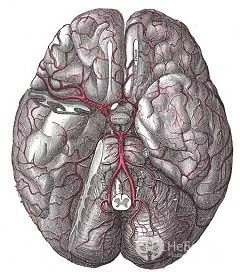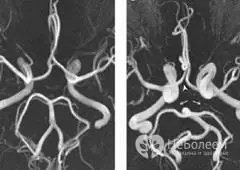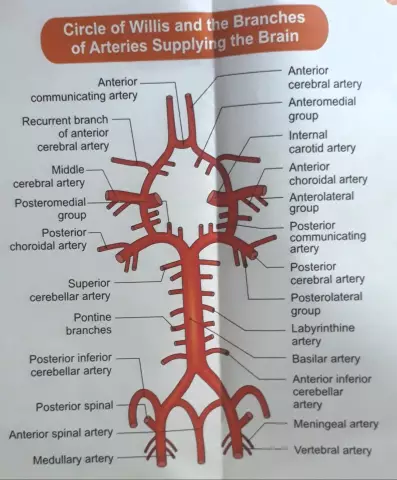- Author Rachel Wainwright [email protected].
- Public 2023-12-15 07:39.
- Last modified 2025-11-02 20:14.
Circle of willis
The circle of Willis (circulus arteriosus cerebri Willisii) is an anastomosis between the vertebrobasilar and carotid blood supply systems of the brain. It is located at the base of the brain and is an oval-shaped network of arteries with the smallest transverse diameter. This anatomical formation got its name from the name of the English doctor who first described it.

The following arteries take part in the formation of the circle of Willis basin:
- The initial part of the posterior cerebral artery;
- The connecting posterior artery;
- Supraclinoid part of the internal carotid arteries;
- Anterior communicating artery;
- The initial part of the anterior cerebral artery.
Circle of Willis functions
The circle of Willis connects each of the carotid arteries not only to each other, but also to the vertebral artery system. With the normal development of the circle of Willis, its right and left halves have a symmetrical structure.
The main function of the circle of Willis is to provide a full blood supply to individual parts of the brain, in the event of a violation of blood flow in one of the cervical arteries caused by any reason.
Circle of Willis diseases: symptoms
Normal development of the circle of Willis occurs in no more than 50% of people. The most common pathology of this arterial system is various types of hypoplasia of the connective arteries. Aneurysms of the arteries of the brain also most often affect the vessels of the Willis circle.
With hypoplasia of the vessels of the circle of Willis, symptoms may be absent, naturally, provided there is normal blood flow in the basins of other cerebral arteries. In this case, the pathology is detected as an accidental diagnostic finding during magnetic resonance imaging.

As shown by the results of a recent study conducted by scientists from the University of Pennsylvania, in some people, the asymmetric development of the circle of Willis can be the cause of frequent migraine attacks occurring with a fairly pronounced aura.
With aneurysm of the vessels of the Willis circle, symptoms are usually absent until it ruptures. In the event of a rupture, blood from the damaged vessel begins to flow into the subarachnoid space. Patients begin to complain of a terrible headache in its strength, which is often accompanied by nausea, vomiting, intolerance to bright light, rigidity of the occipital muscles. With significant hemorrhage, a coma develops quickly or the patient dies almost immediately.
Circle of Willis diseases: treatment
Many people, having learned that they have an abnormal variant of the development of the circle of Willis, fall into despair, believing that they have a serious illness that requires certain therapy. But in reality, treatment of the circle of Willis is not carried out.
As we said above, there are various options for the development of the circle of Willis, and those that are considered the norm are not found in every person. The vessels of this arterial basin are intended not so much for the blood supply of the brain cells as for compensating the cerebral blood flow disorders resulting from thrombosis due to the transfer of blood from one arterial basin to another. Therefore, in most cases, the pathology of the development of the circle of Willis does not require treatment.
In the presence of an aneurysm of one of the arteries of the Willis circle, treatment is surgical and consists in bandaging the aneurysm. In cases where an aneurysm is opened, conservative treatment is carried out, the same as for subarachnoid hemorrhage caused by any other cause.
Found a mistake in the text? Select it and press Ctrl + Enter.






